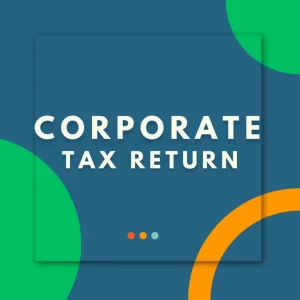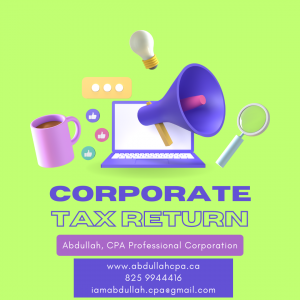Many professionals can now incorporate their practices as professional corporations as per the provincial legislation. Professional Corporations are now becoming a very common structure since the majority of provinces have relevant professional regulations.
Professional Corporations are popular amongst Accountants, Lawyers, and Medical Professionals.
Disclaimer: This post is an income tax perspective of the use of professional corporations rather than a legal one. The readers must seek legal advice to determine their professional liability issues. the reference to professional liability in this post does not make it advise of any kind. Further, this post explains the income tax perspective at a very high and basic level. Different structures used by professionals require specific tax advice. This post is focused on the Province of Ontario in Canada.
Professional Corporations
Limitation of Liability
Please see the disclaimer above.
A major objective behind the incorporation is to take advantage of the limited liability of a corporation. In the case of professional corporations, the limitation of liability, generally, works as below:
- A limited liability towards the corporate debts, trade payables, line of credit, non-guaranteed loans, or leases.
- No liability protection to the professional at the personal level for professional malpractice.
Since the professional performing, the services in a professional corporation is working for the professional corporation with unlimited liability, it puts the same individual on the same footing as any other self-employed professional.
Shareholding of Professional Corporations
The provincial regulations further restrict who can be shareholders, directors, and officers of a professional corporation. Only the members of the designated profession can hold the shares, directly or indirectly, of the professional corporation. This requirement restricts the use of income splitting with lower-income family members.
Further, all the directors and officers of professional corporations must be the shareholder of the professional corporations. In some instances, such as the accounting profession, CPA Ontario does allow a corporate shareholder provided it’s a professional corporation registered with CPA Ontario. The use of a tiered corporate structure provides asset protection to the operating corporations through the tax-free dividend movements from operating corporations to holding corporations. However, in the case of professional corporations, the liability limitation does not extend to professional liability.
Prior to the introduction of Tax-on-split-income (TOSI) rules in 2018, income splitting to lower-income family members was possible due to the non-voting shareholders of Health Professional Corporations Regulations.
Tax Considerations For Professional Corporations
Given the regulatory requirement of shareholding, a professional corporations’ tax benefits are somewhat limited as compared to any other incorporated business.
Lower Corporate Tax Rate
One of the most attractive features of using corporate structures is the lower corporate income tax rate.
Canadian Controlled Private Corporations (CCPC) enjoy preferential tax rates at both federal and provincial levels. Most of the professional corporations fall within this category as the professionals are practicing in the relevant provinces.
CCPCs are allowed a small business deduction that brings down the corporate tax rate on the first $500,000 of Active Business Income (ABI). In the province of Ontario, the combined 2021 corporate tax rate is 12.2% for 2021 for the first $500,000 of ABI. In Alberta, the 2021 rate is 11%.
There are rules regarding sharing of $500,000 business limit to prohibit the multiplication of SBD through multiple corporations. In case if a professional has other corporations, the business limit needs to be allocated amongst them.
Lower corporate tax rates are effective only in case of asset retention. Where the earnings are distributed to shareholders, the dividend gross-up is applied to add the same income at a personal level. This income is then taxed at the marginal rates of individuals. A dividend tax credit is available to eliminate double taxation.
Tax Deferral
Another advantage of using a professional corporation is the option to defer tax.
As mentioned before, the income from the corporation in the form of dividends is grossed up and added to an individual’s personal income. If no dividends are distributed, no income is included at the personal level. This allows individual professionals to time their distributions based on their personal tax situations if they have other sources of income such as investment income or rental income.
The decision to issue a dividend, and how much dividend, largely depends on the personal income levels. In the province of Ontario, if there is no other source of income, dividends up to $33,733 (the year 2021) do not result in any additional tax liability at a personal level.
While deciding on the distributions, the tax advantage of asset retention should be carefully weighed against the exposure to the liability. Remember, professional corporations still enjoy limited liability at the corporate level other than professional liability. Professional liability is usually covered by the mandatory professional insurance almost always required by the professional regulatory bodies.
In Canada, the dividends flow tax-free between connected corporations. Check with your regulator, if another professional corporation can be registered by the same professional for the sake of assets transfer. While deciding so, the articles and the regulations need to be checked for the restrictions on the business. Oftentimes, articles of professional corporations must restrict the investment of surplus funds.
Income Splitting – Not available
Since professional corporations require that the shareholders, directors, and officers must be members of the regulatory body, this does not leave room for income splitting with the lower-income family members.
Under the Health Profession Corporations Regulations, family members and trusts that are held for the minor children of family members can hold the non-voting shares of physicians and dentists’ professional corporations. This did give the income splitting opportunity in the past, however, in 2018 TOSI rules eliminated these benefits.
Lifetime Capital Gain Exemption
If qualified, your professional corporation’s shares might be eligible as Qualified Small Business Shares (QSBC). An individual enjoys a Lifetime Capital Gain Exemption (LCGE) of $892,218 (2021 limit) on the sale of QSBC Shares.
QSBC Shares has specific requirements and planning ahead of 24 months before disposition of shares can help the shareholder with LCGE benefit. The surplus cash and investments of professional corporations may make it ineligible to qualify for QSBC. zde
Salary Vs. Dividends
Another important question faced by the professionals is how to withdraw from the professional corporation? Should it be a salary or a dividend, or a mix of both…
Again, it depends on the personal tax situation and the goals. Please read the information about the salary vs dividends.
Salary is an earned income. Earned income gives rise to the RRSP deduction limit for next year. Contributions to Canada Pension Plan also help for retirement planning. At a personal level, lenders often want to see earned income.
Dividends on the other hand do not give rise to the RRSP limit and there are no contributions to CPP. Dividends are shown as investment income on personal tax returns.
A Salary dividend mix can be helpful as a part of personal income tax planning in your sitting with a professional income tax accountant.
Other Tax Issues
Personal Services Business
Another important tax issue to be aware of is rules surrounding Personal Services Business (PSB), also widely known as Incorporated employee. A professional corporation must practice the profession itself. The professional is the employee or service provider in agreement with that professional corporation.
A professional corporation may be classified as a PSB if the professional is providing employment services to another employer. The easy way to see if PSB implications are there is to look at the relationship with the practice employer. If the relationship between the professional and the third party practice is of an employment nature, the PSB rules are applicable.
PSB rules are punitive and most of the time a tax disadvantage position. There is an additional 5% tax, no small business deduction, no general rate reduction, and very limited business deductions are available.
Other issues to be aware of
The above discussion is for the small practices or sole practitioners. The income tax considerations start becoming complicating if the firm is large with multiple shareholders.
Discuss with your professional accountant, in this case, the matters such as:
- If you are still operating under the sidecars structure
- Corporate partnerships
- Small business deduction sharing
- Specified corporate income and specified partnership income for SBD
- Joint ventures and risk of being reclassified as a Partnership
- Dual citizen or resident, such as American citizens or green card holders and practicing as professional corporations in Ontario






